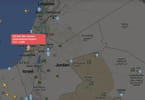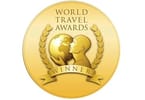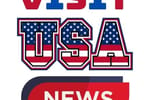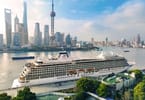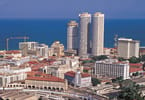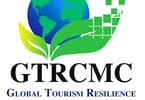This story tells it all. A Hawaii vacation from the eyes of a Japanese tourist to the Aloha State. It gives the reason why tourism from Japanese is to secure a steady flow of satisfied high spending tourists for Hawaii. Japanese keep going on that 7-7 1/2 hour plane trip to visit the US Island state – and they love it
I arrive at Kona Airport on the island of Hawaii at around 8 p.m. after a 45-minute flight from Honolulu on Oahu. I wheel my luggage to a taxi, and as we drive along, I glance up at the sky through the side window. I can’t help but gasp. The night sky is blanketed with stars, creating an illusion that I could reach up and touch them. After I reach my hotel, I sit on a deck chair listening to the sound of waves and gazing at the stars until late at night.
Hawaii Island is famous for the clarity of its pitch-black night skies. Rising 4,200 meters above sea level near the summit of Mauna Kea are several observatories operated by various countries, including the National Astronomical Observatory of Japan’s Subaru Telescope. They are the reason why night-time lighting is kept to a minimum across the island.
Over 80 percent of Japanese tourists who make it to Hawaii still only travel as far as Oahu. However, more frequent visitors to Hawaii are turning their attention to the charms of the lush nature and rustic townships of its other islands.
What is it about Hawaii that has attracted so many Japanese over the years? In his book “Akogare no Hawaii” (Longing for Hawaii), Tokyo University associate professor Yujin Yaguchi categorized postwar Japanese attitudes toward Hawaii using three keywords: “longing,” “popularity” and “healing.” Its image has evolved from “a special holiday in paradise” to “an affordable and accessible tourist destination.” Furthermore, there is also a trend toward “travel that brings people into contact with the real Hawaii with an emphasis on the ecological and the local.”
Compared to half a century ago, when the exchange rate was $1 to 360 yen, Japan’s economic clout has increased remarkably, so it is natural that Japanese are now drawn to Hawaii for different reasons. Even so, this does not necessarily mean that “longing” and “popularity” have ceased to be motivating factors.
Travel company Jalpak, which was once synonymous with overseas tours for Japanese, has focused heavily on Hawaiian tourism since its inception.
“Hawaii has a pleasant climate and a high level of public safety, and also well-developed tourism resources such as beaches and hula shows,” says Umeyoshi Kakinuma, director of Jalpak’s Hawaii and Micronesia Group. “The food is delicious, too. Free loop-line buses operated by travel companies run every few minutes, and do the rounds of major tourist attractions. Japanese don’t have to worry about the language barrier in Waikiki either.”
This August, Jalpak will operate charter flights aimed at families with small children. Scriptwriter Kundo Koyama says he has made around 20 trips to Hawaii.
“There are always new discoveries to be made,” he says. “Beginners can have a great time just by hanging around Waikiki, and repeaters can head out to other islands. There are many ways to enjoy.”
Another characteristic of Hawaiian tourism is the number of visitors whose primary purpose is to go shopping. There are numerous luxury brand stores, and an abundance of boutiques selling exclusive resort clothing, swimwear and accessories, that are only found in the islands. To Japanese, Hawaii is a brand in itself.
For the wealthy, Hawaii’s brand power even extends as far as real estate.
The Kaka’Ako district is situated just over two kilometers northwest of Waikiki. Near the Ala Moana Center, a shopping mall overlooking a beach that features a vast array of brand stores, large-scale redevelopment is progressing and plans to build new condominiums are being announced one after another.
One of these is the 23-story One Ala Moana, scheduled for completion in late 2014. In 2012, 205 units measuring between 70 to 371 square meters were sold for prices ranging from $500,000 to $10 million (approximately 50 million yen to 1 billion yen). Thirty-one condos marketed to Japanese buyers were snapped up immediately.
“Oahu has a limited amount of usable land, and the market’s gone into overdrive here,” says Sachi Braden, a 25-year veteran of the local real estate industry. “A lot of Japanese eye properties here as investment opportunities to buy a second home.”
Businesses are also being enticed to Hawaii.
In 2012, a Lawson convenience store opened in the lobby of the upscale Sheraton Waikiki Hotel. As well as selling local delicacies such as macadamia nuts and Spam rice balls, it also offers Japanese favorites such as “oden” stew.
“There are a lot of Japanese tourists and Japanese-Hawaiians, so the local market has potential,” says Lawson group CEO Genichi Tamatsuka. “At the same time, we’ve positioned this store as a steppingstone into the North American market, and are studying the legal system, workforce management and product selection.”
Japanese companies bought up land and hotels in Hawaii during the 1980s and 1990s, and many pulled out once the economic bubble at home collapsed. However, in recent years a new wave of Japanese capital has been making its presence felt in various industries.
In 2012, ladies’ footwear retailer Akakura opened its first overseas store in Hawaii. “It can also provide a boost to sales at home,” says Akakura President Futoshi Yamamoto. “We’re considering selling products that are currently exclusive to Hawaii in Japan as well.”
Discount store Don Quijote arrived on the scene in 2006, placing an emphasis on foodstuffs that made it a hit with local customers.
“We began this as the first step in our plans to expand overseas, but the reaction’s been huge both here and at home, which has been a powerful reminder of Hawaii’s brand value,” says Don Quijote USA President Naoki Yoshida.
When Hawaiian travel stalwart Japan Airlines (JAL) ran into management turbulence in the late 2000s, it considered withdrawing its sponsorship of the Honolulu Marathon for the first time in more than 20 years. However, as more than 10,000 Japanese runners participate each year, it was deemed to have considerable merits with regard to advertising and attracting customers, and the sponsorship was ultimately renewed.
HISTORY OF HAWAII
The Hawaiian islands are an archipelago located in the middle of the Pacific Ocean, and it has six main islands: Oahu, Hawaii, Maui, Kauai, Molokai and Lanai. Its location near 20 degrees north latitude gives it a tropical climate, but it also has active volcanoes up to 4,000 meters in height and a diverse natural environment.
Over 1,000 years ago, Polynesians sailed north from around Tahiti and settled here, building a society with its own unique culture. British explorer Captain James Cook visited the islands in the 18th century, and Western immigration began. In 1810, Kamehameha I united the archipelago with the use of weapons and other imported Western technology.
Caucasians who were given permission to own land established farms, and their desire for greater power led to the royal dynasty being overthrown in 1893 with the support of the United States. Hawaii was annexed by the United States in 1898, and became the 50th state in 1959.
According to a census conducted in 2011, the state’s population was approximately 1.36 million, with around 950,000 living on Oahu. The census reported that 26 percent are Caucasian, 38 percent are of Asian descent, and indigenous Hawaiians and other ethnic Pacific Islanders comprise 10 percent. Economically speaking, its military sector is as crucial as its tourist industry and it has many U.S. bases, which are mainly located on Oahu.





